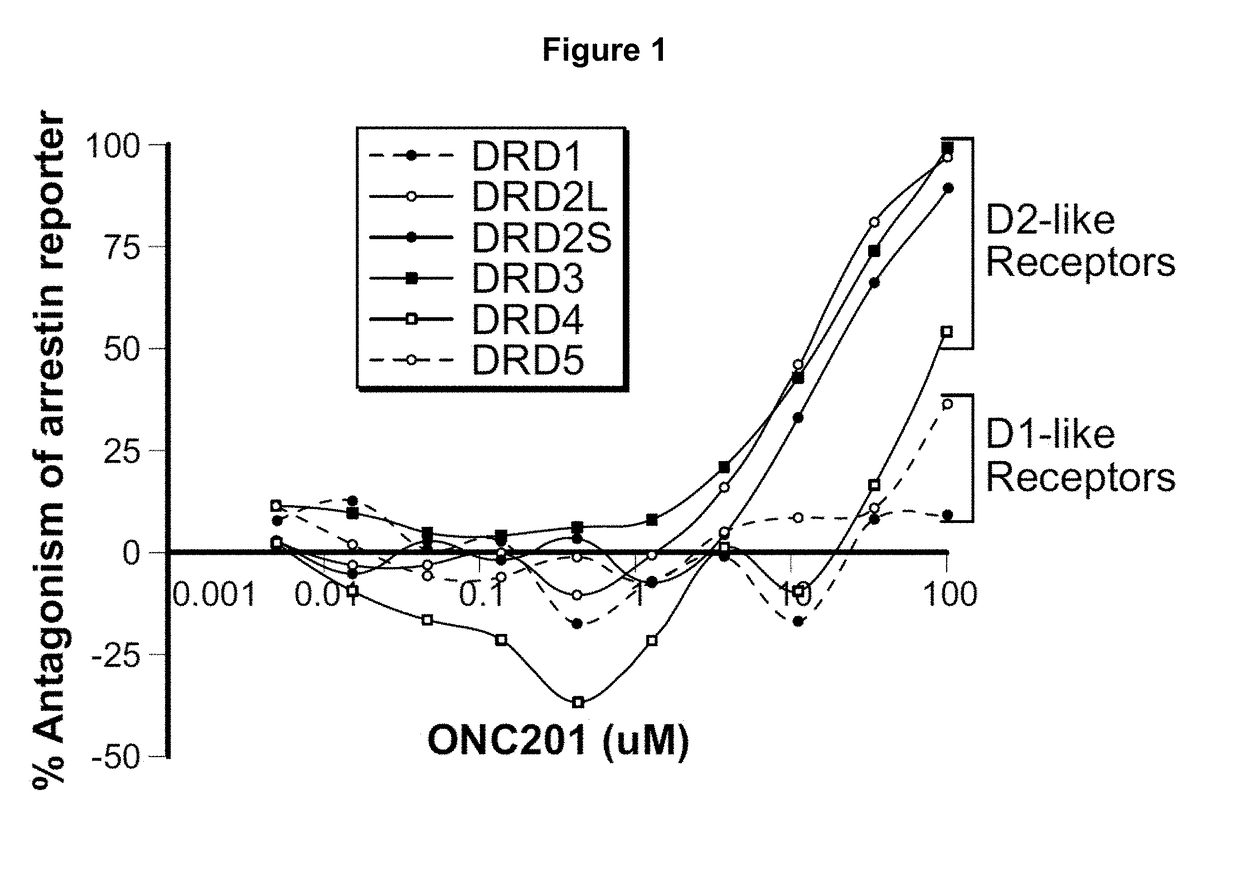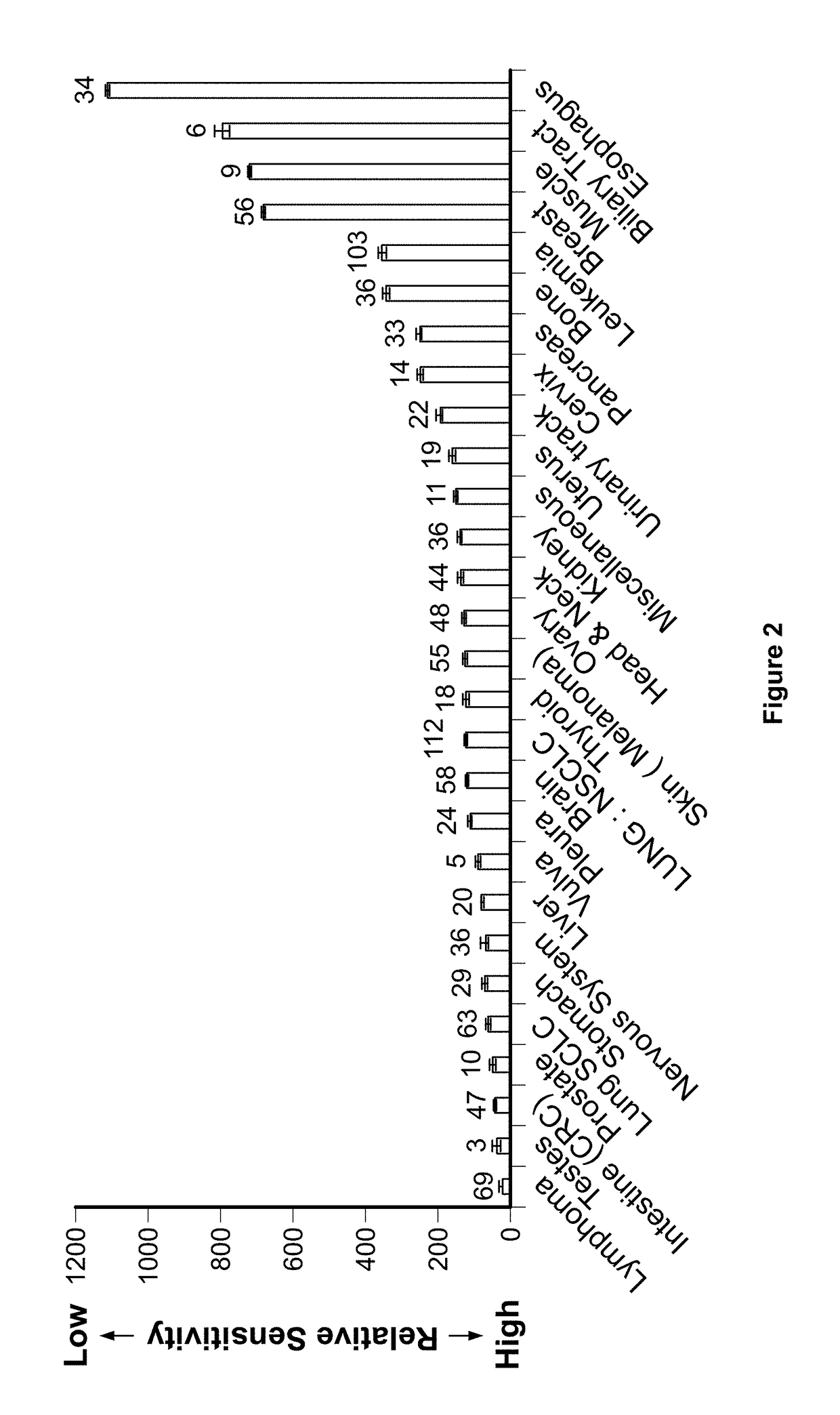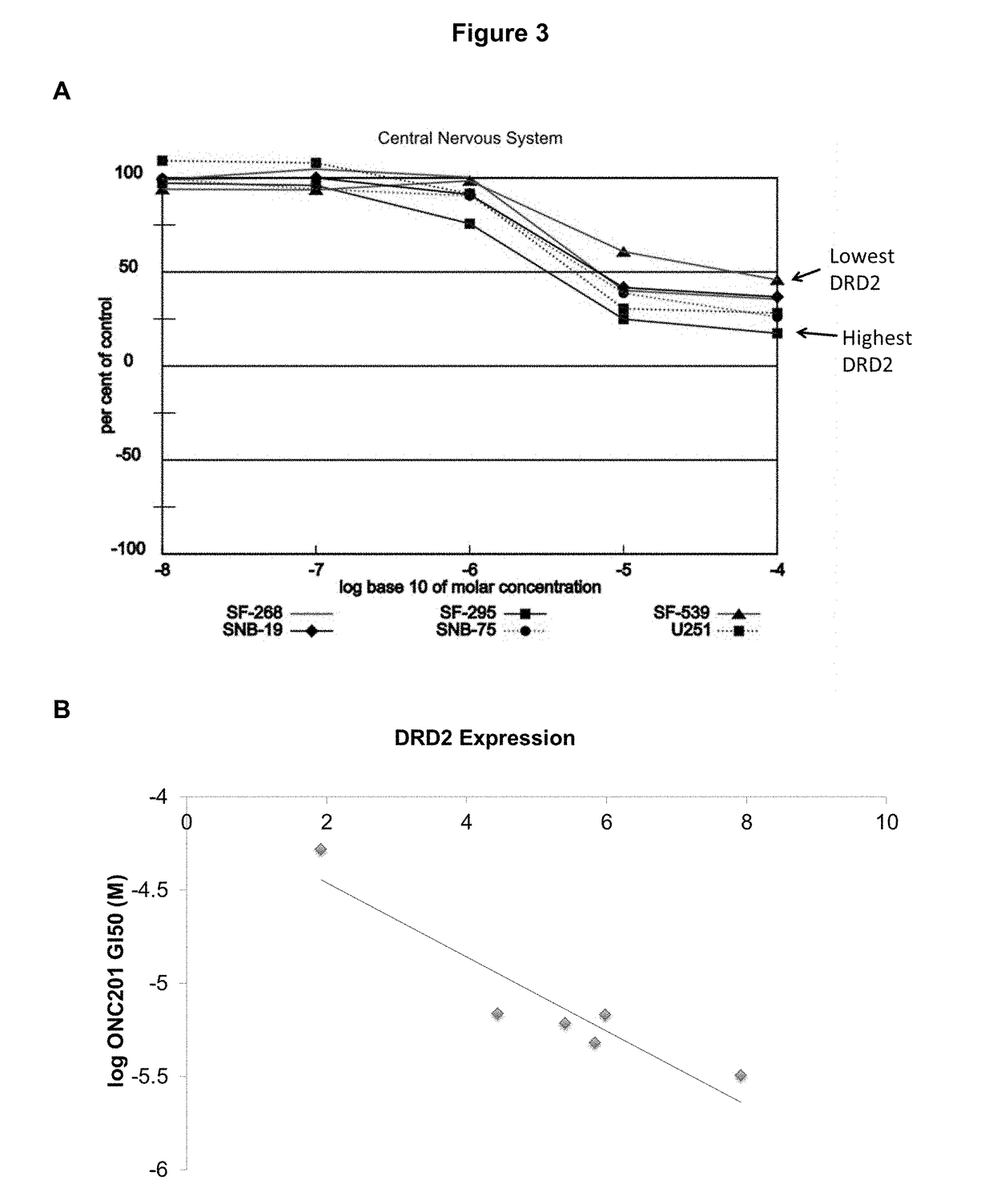Imipridones for gliomas
a technology of gliomas and imipridones, which is applied in the field of gliomas, can solve the problems of large unmet medical needs, unproven ability to improve clinical outcome, and inability to evaluate the efficacy of this regimen in adult mutant h3 k27m glioma patients
- Summary
- Abstract
- Description
- Claims
- Application Information
AI Technical Summary
Benefits of technology
Problems solved by technology
Method used
Image
Examples
example 1
of 2-Chlorobenzylamino-2-imidazoline Hydriodide
[0295]To a stirred solution of 2-methylthio-2-imidazoline hydriodide (244 mg, 1.00 mMol) in dry dioxane (2.0 mL) was added 2-chlorobenzylamine (141 mg, 1.0 mMol). The reaction mixture was stirred for 90 min at 70° C. under argon. The solution was cooled to room temperature, filtered on a sintered funnel, washed with cold dioxane (2 mL) and dried under vacuum. The white solid compound 4*HI (R2=2-chlorobenzyl) was obtained (242 mg, 72%) and used without further purification.
example 2
of 2-Chlorobenzylamino-2-imidazoline
[0296]To a stirred solution of 2-chlorobenzylamino-2-imidazoline hydriodide (242 mg, 0.72 mMol) in water (3 mL), was added 1.0 N sodium hydroxide (2 mL) at 7° C. The reaction mixture was stirred for 30 min at 7° C. under argon. After that methylene chloride (5 mL) was added and the mixture stirred for another 5 min. The reaction mixture was extracted with methylene chloride (2×2.5 mL). The organic layer was dried over anhydrous Na2SO4, filtered and evaporated. The resulting free base (150 mg, 100%) was obtained as a viscous liquid and was used for the next reaction without any further purification. MS(ESI) 210 (M+H).
example 3
of Methyl-1-benzyl 4-oxo-3-piperidine Carboxylate (Compound (6))
[0297]To a stirred methyl-1-benzyl 4-oxo-3-piperidine carboxylate hydrochloride (5.7 g, 20 mMol) in ethyl acetate (50 mL), was added triethylamine (6 mL) at 7° C. The reaction mixture was stirred for 30 min at 7° C. under an argon atmosphere. The reaction mixture was extracted with ethyl acetate (2×50 mL) and washed with water (50 mL). The organic layer was dried over anhydrous Na2SO4, filtered and evaporated. The resulting free base residue (5, R1=benzyl) as a viscous oil was used in the next reaction without any further purification MS(ESI) 248 (M+H)
PUM
| Property | Measurement | Unit |
|---|---|---|
| dissociation constant | aaaaa | aaaaa |
| dissociation constant | aaaaa | aaaaa |
| dissociation constant | aaaaa | aaaaa |
Abstract
Description
Claims
Application Information
 Login to View More
Login to View More - R&D
- Intellectual Property
- Life Sciences
- Materials
- Tech Scout
- Unparalleled Data Quality
- Higher Quality Content
- 60% Fewer Hallucinations
Browse by: Latest US Patents, China's latest patents, Technical Efficacy Thesaurus, Application Domain, Technology Topic, Popular Technical Reports.
© 2025 PatSnap. All rights reserved.Legal|Privacy policy|Modern Slavery Act Transparency Statement|Sitemap|About US| Contact US: help@patsnap.com



